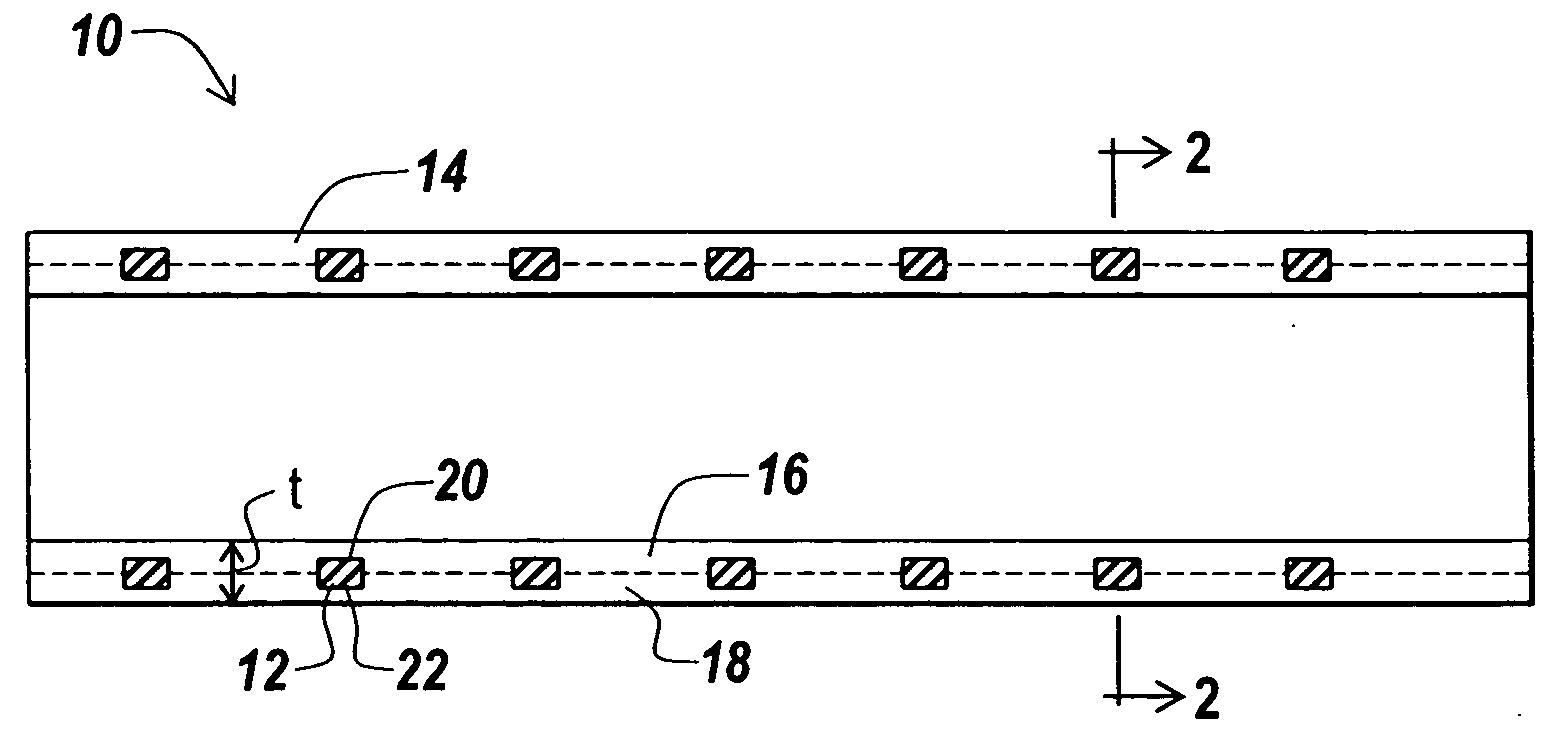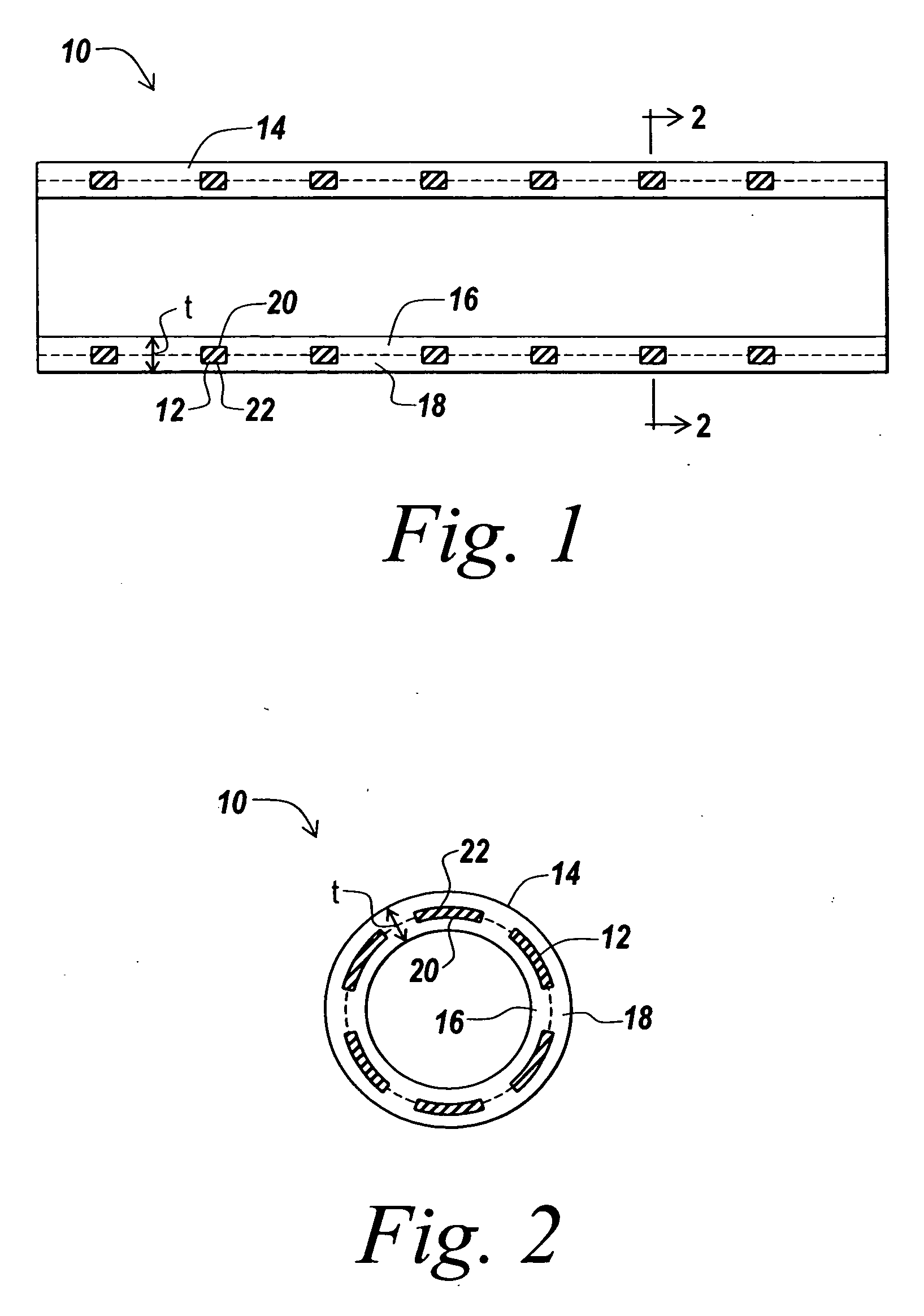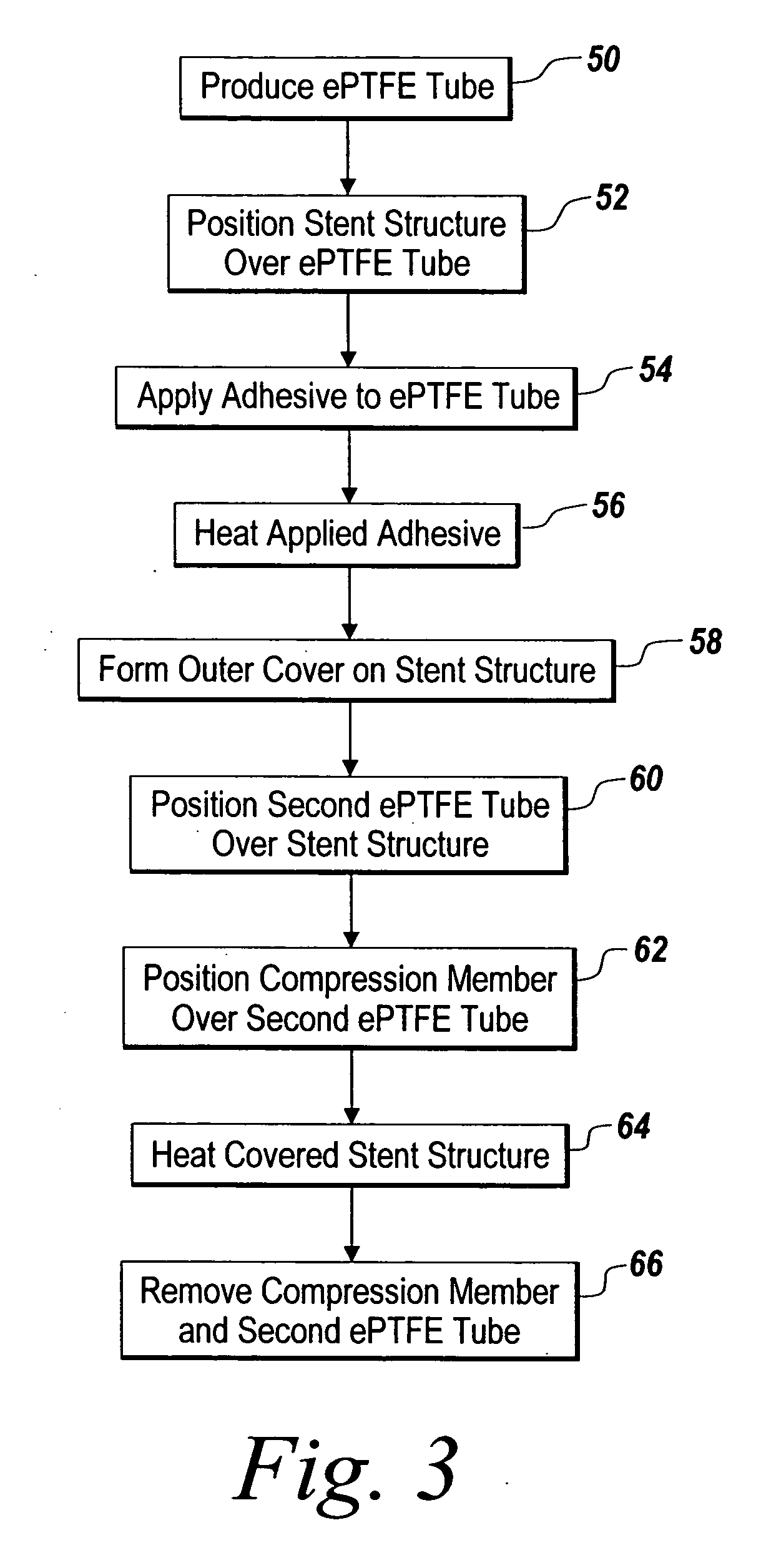Covered stent and method of covering a stent
a stent and stent technology, applied in the field of stent and stent covering, can solve the problems of increasing the incidence and achieve the effect of minimizing the risk of stent covering tearing during expansion
- Summary
- Abstract
- Description
- Claims
- Application Information
AI Technical Summary
Benefits of technology
Problems solved by technology
Method used
Image
Examples
example 1
[0037] Balloon expandable PALMAZ-type slotted stents were covered with ePTFE in accordance with the method of covering a stent described above. The expanded diameter of each stent was 9 mm. Each stent included an inner cover of ePTFE and a two-layer outer cover of ePTFE as illustrated in FIG. 4 above. The inner cover of each stent was formed from an ePTFE tube that was folded over the stent structure to create the outer cover of the covered stent.
[0038] A first lot of five stents, Lot 1 in Table 1 below, were covered using an ePTFE tube having an average wall thickness 0.0073 in. and an average IND of 137 microns. A second lot of five stents, Lot 2 in Table 1 below, were covered using an ePTFE tube having an average wall thickness of 0.010 in and an average IND of 139. A third lot of four stents, Lot 3 in Table 1 below, were covered using an ePTFE tube having an average wall thickness of 0.016 in and an average IND of 147. After covering, the cover wall thickness of each stent in t...
example 2
[0041] Animal studies were conducted in which eight covered stents were deployed in the arteries of two male pigs to observe the cellular response to the stents. The stents employed were balloon expandable stents of the type described in commonly-assigned U.S. patent application Ser. No. 09 / 628,096, filed Jul. 28, 2000. The stents were covered in accordance with the method described above. A single ePTFE tube was utilized to provide the inner cover and the outer cover. The stents had expanded diameters of 6-8 mm. The ePTFE used to cover each stent had a wall thickness of 0.01 in. and an average IND of 139 microns in the unexpanded configuration.
[0042] The covered stents were deployed in the left carotid artery, the right carotid artery, the left iliac artery, and the right iliac artery of two male pigs. The covered stents were deployed with a catheter delivered PET balloon using standard operative techniques. Each stent deployed successfully at approximately 6 atm. The pigs were sa...
PUM
| Property | Measurement | Unit |
|---|---|---|
| Length | aaaaa | aaaaa |
| Pressure | aaaaa | aaaaa |
| Length | aaaaa | aaaaa |
Abstract
Description
Claims
Application Information
 Login to View More
Login to View More - R&D
- Intellectual Property
- Life Sciences
- Materials
- Tech Scout
- Unparalleled Data Quality
- Higher Quality Content
- 60% Fewer Hallucinations
Browse by: Latest US Patents, China's latest patents, Technical Efficacy Thesaurus, Application Domain, Technology Topic, Popular Technical Reports.
© 2025 PatSnap. All rights reserved.Legal|Privacy policy|Modern Slavery Act Transparency Statement|Sitemap|About US| Contact US: help@patsnap.com



